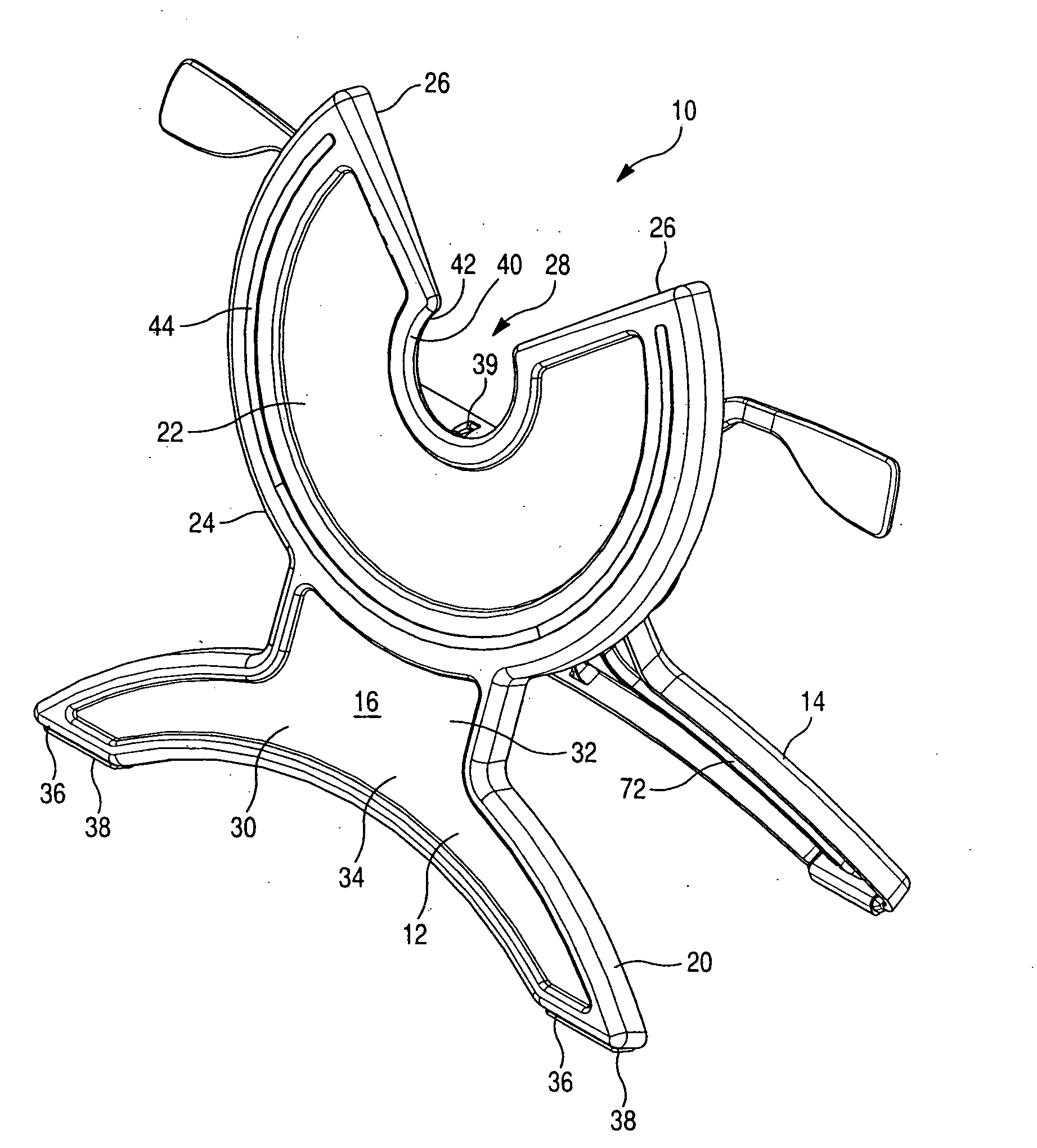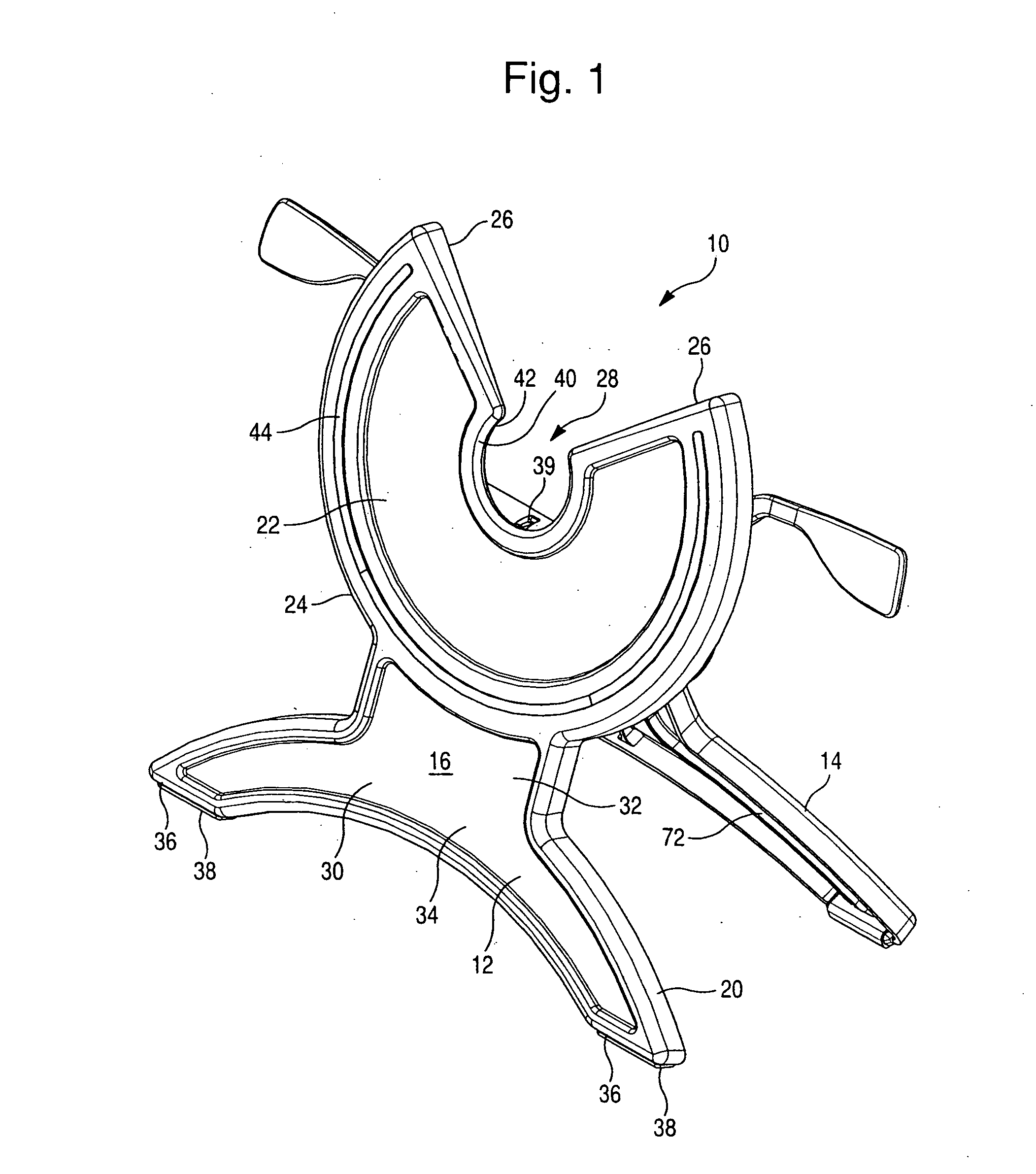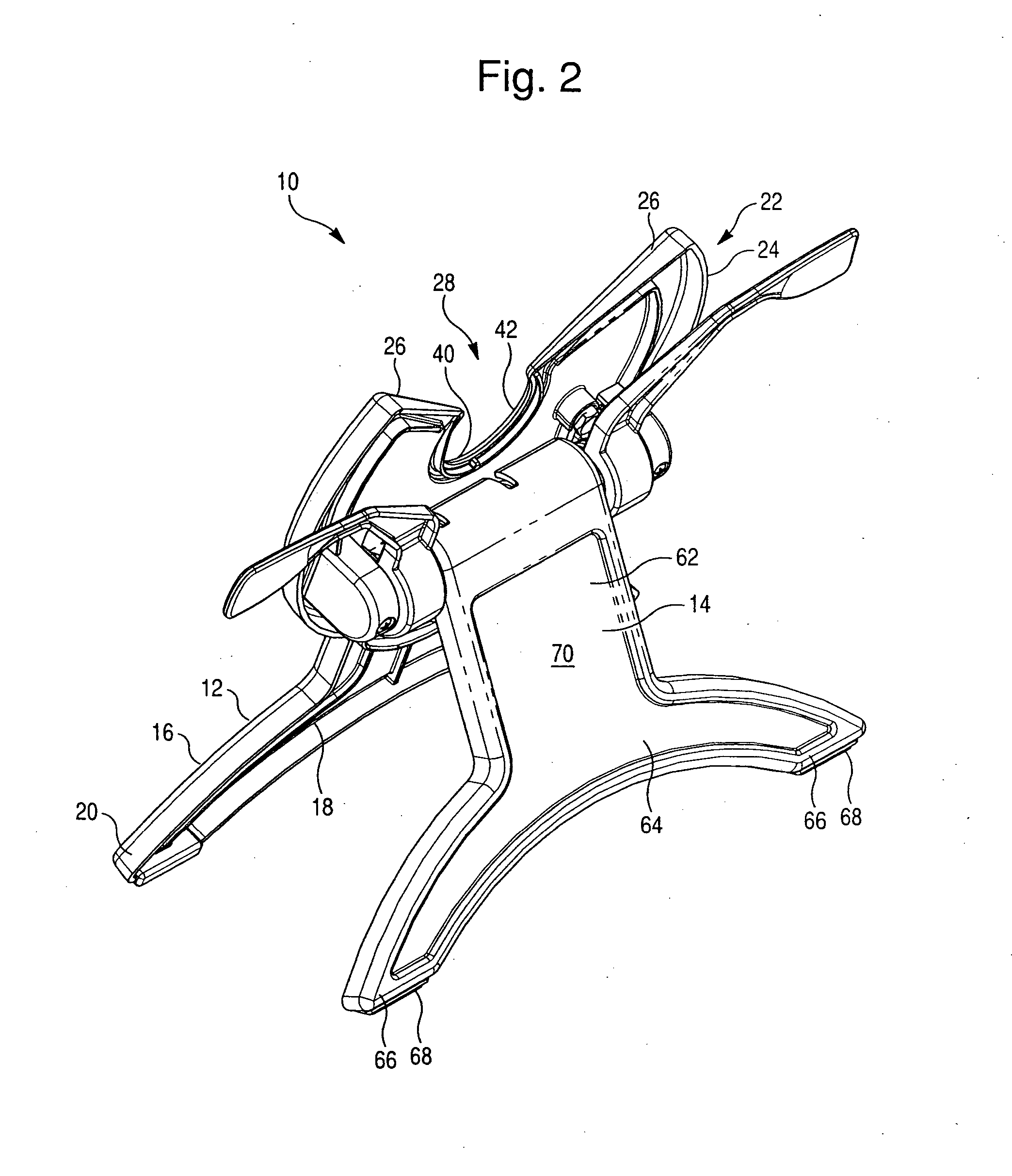Stand for supporting a display in multiple orientations and a display used in combination with said stand
a technology for supporting a display and a stand, which is applied in the direction of machine supports, instruments, and electrical apparatus casings/cabinets/drawers, etc., which can solve the problems of not being able to rotate the screen and the housing, being difficult to support on one's lap, and not being able to remove the device. the effect of quick and easy removal
- Summary
- Abstract
- Description
- Claims
- Application Information
AI Technical Summary
Benefits of technology
Problems solved by technology
Method used
Image
Examples
fourth embodiment
[0073] the invention is shown in FIGS. 22-25 wherein a display 400 including a housing 402 having a rear surface 404 is provided with a rotatable bearing 406 on rear surface 404. Bearing 406 is centrally located on housing rear and includes a central opening 408 to accommodate a cable 410 emerging from the display so that bearing 406 can rotate around the cable without twisting or damaging the cable. Bearing 406 further includes two openings 412 which each of which preferably includes a pair of converging wall portions 414 meeting at a vertex 415. As best seen in FIG. 24, openings 412 each open into an interior chamber 416 that is wider than opening 412 thus forming a lip or flange 418 around each opening.
first embodiment
[0074] Display 400 is used with a stand 420 comprising a planar front side 422 having a V-shaped notch 424 and first and second projections 426 located one on either side of notch 424. Each projection includes a rod portion 428 and an end flange 430, and these projections are securely fastened to or integrally formed with the stand. The planar front side can be supported in any manner, for example, using a fixed leg or using the adjustable legs described above in the
[0075] In use, the display is mounted on the stand by aligning openings 412 with projections 426 and inserting projections 426 into openings 412. The openings are larger than end flanges 430 so small errors in alignment are tolerated. Converging wall portions 414 direct the projections toward vertex 415 where they are securely supported. Flanges 430 on the projections are received in chamber 416 behind lip 418 of the display and preventing the projections from being pulled out of the openings in a direction normal to the...
PUM
 Login to View More
Login to View More Abstract
Description
Claims
Application Information
 Login to View More
Login to View More - R&D
- Intellectual Property
- Life Sciences
- Materials
- Tech Scout
- Unparalleled Data Quality
- Higher Quality Content
- 60% Fewer Hallucinations
Browse by: Latest US Patents, China's latest patents, Technical Efficacy Thesaurus, Application Domain, Technology Topic, Popular Technical Reports.
© 2025 PatSnap. All rights reserved.Legal|Privacy policy|Modern Slavery Act Transparency Statement|Sitemap|About US| Contact US: help@patsnap.com



